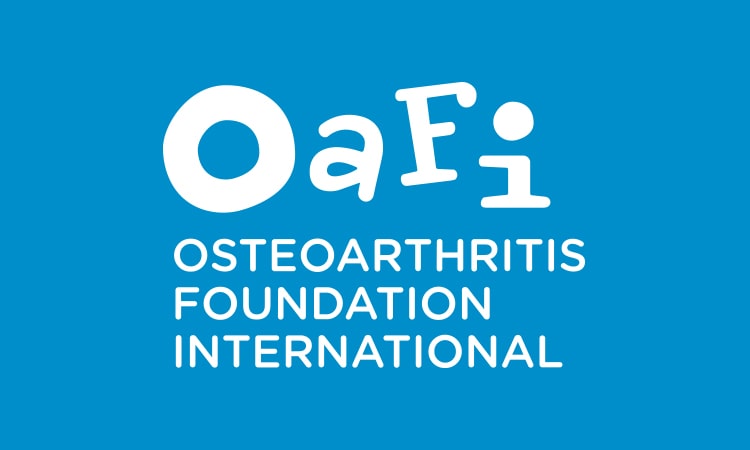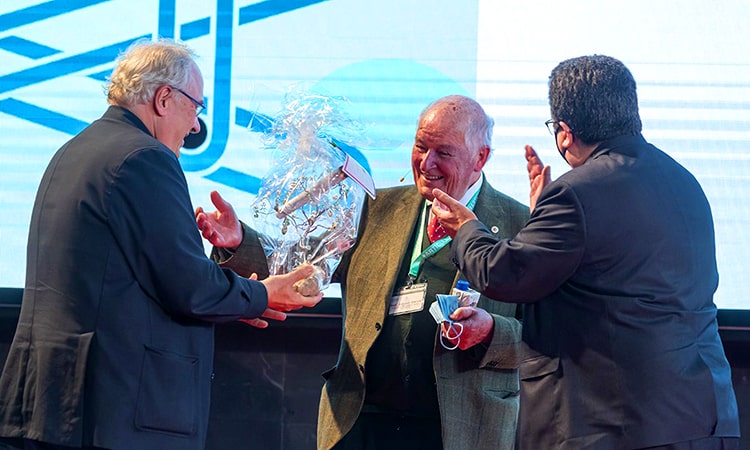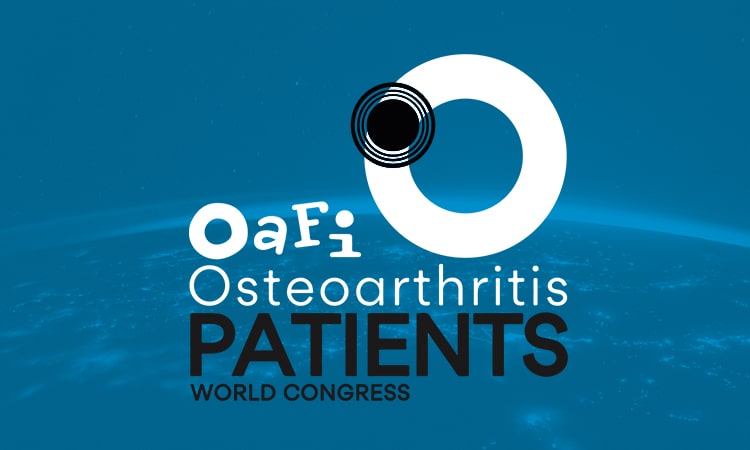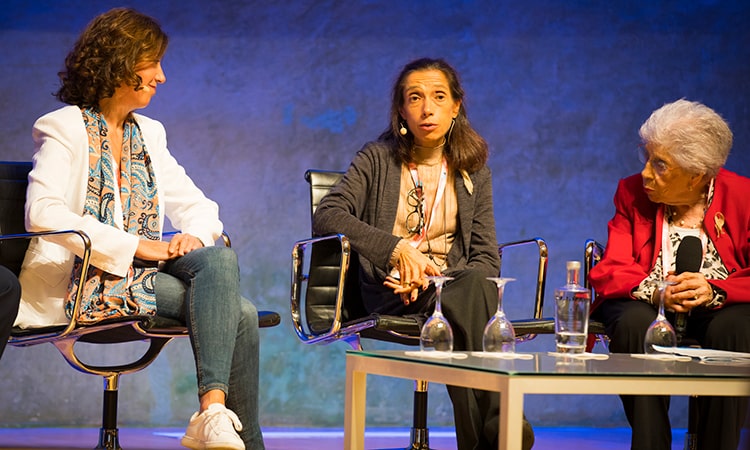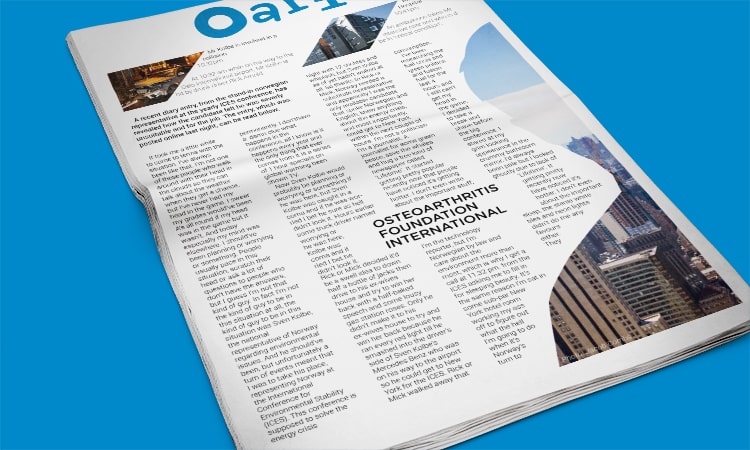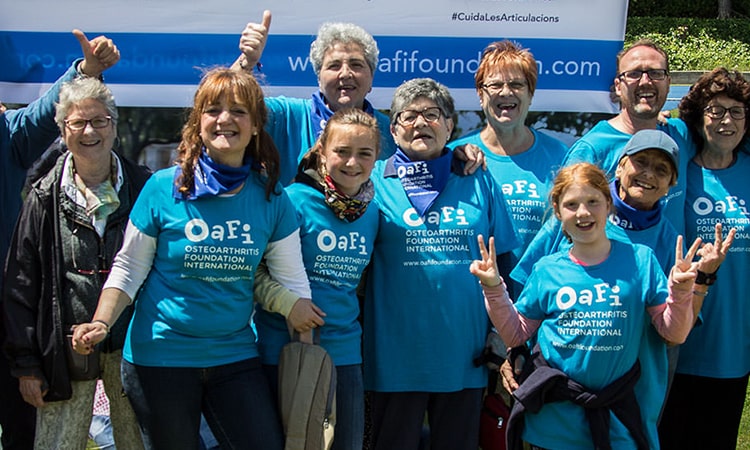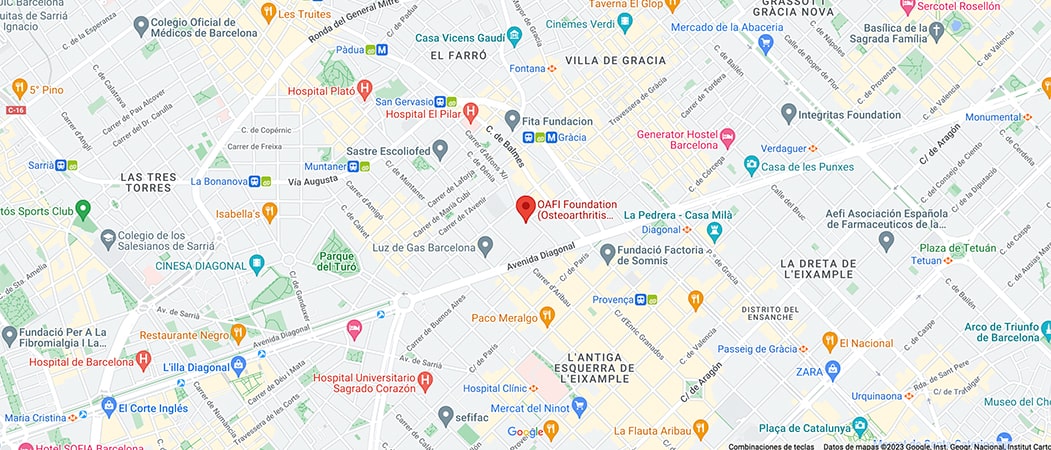- Foundation
- Actions
- Osteoarthritis
- Actuality
- OAFI Radio/TV
- Get Involved
- Contact
-
-
-
OAFI
Osteoarthritis International FoundationC/ Tuset, 19 · 3º 2ª
08006 Barcelona
(+34) 931 594 015
info@oafifoundation.comSchedule:
Monday-Thursday 9AM-6PM
Friday 8AM-3PM
-
-
-

-

ARTRO 360: NEW MANAGEMENT MODEL TO ADVANCE IN THE TREATMENT OF OSTEOARTHRITIS BY OPTIMIZING RESOURCES
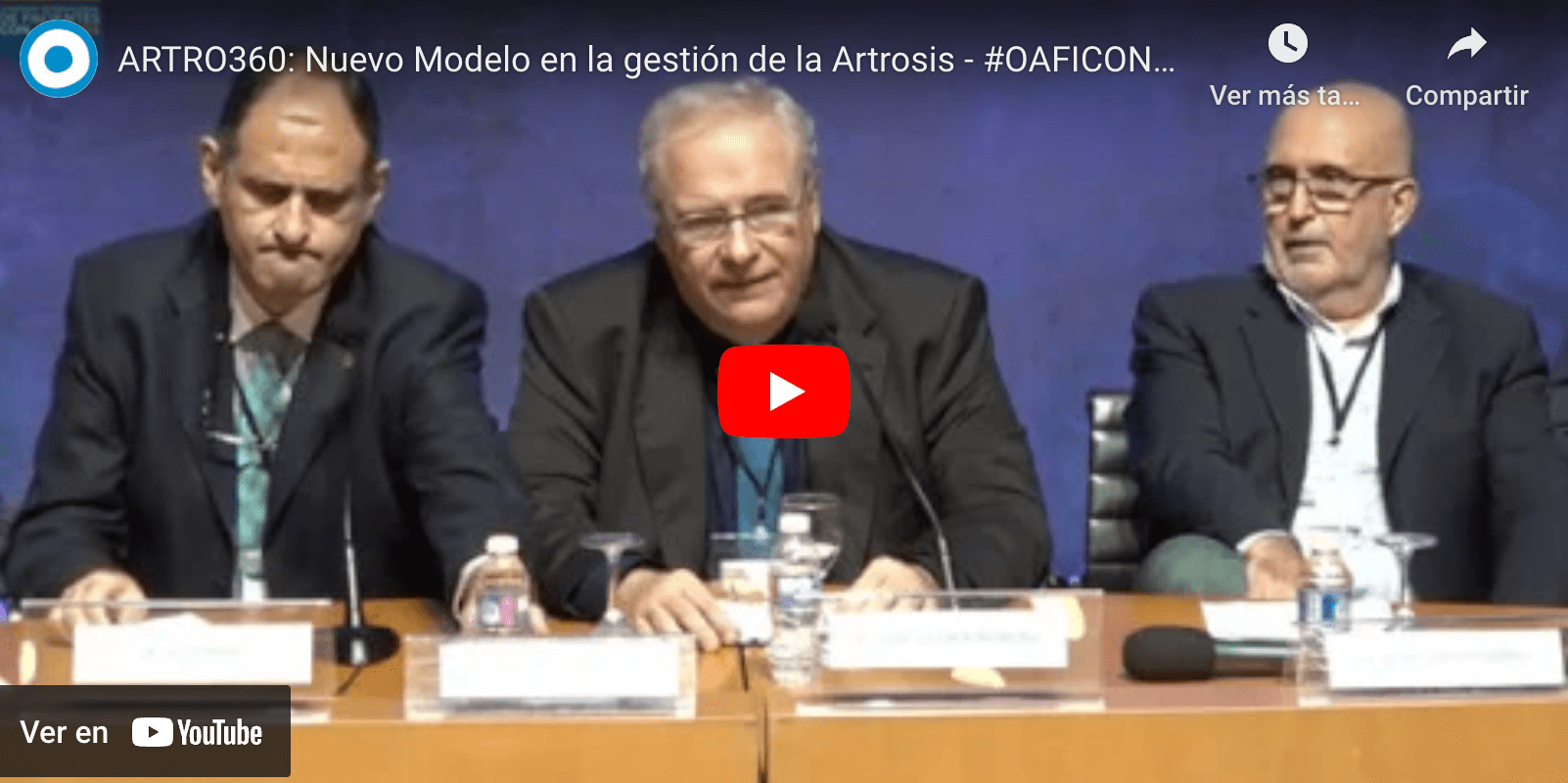
- OAFI, together with the Medical and Scientific Societies, proposes to the health authorities a NEW CARE MODEL IN THE MANAGEMENT of the disease that puts the PATIENT in the center: ARTRO 360.
- Patients, represented by OAFI, lead this new model that brings together all those involved in the disease, to demand at all levels to improve the quality of life of patients and osteoarticular research to obtain new treatments.
- Osteoarthritis (OA), a global epidemic of a serious disease.
The OAFI Foundation, together with the SECA, (Spanish Society for Quality Care), SETRADE (Spanish Society of Sports Traumatology), SEMERGEN (Spanish Society of Primary Care Doctor), SER (Spanish Society of Rheumatology), SEFAC (Spanish Society of Family and Community Pharmacy), SEMG (Spanish Society of General and Family Doctors), semFYC (Spanish Society of Family and Community Medicine), University of Barcelona – Faculty of Medicine and Health Sciences, among others, propose to the health authorities to develop and implement a management model for osteoarthritis that allows early diagnosis, preventive and rehabilitative intervention, the empowerment of patients and family, continuity of care, the correct therapeutic compliance, the efficient use of resources and the effectiveness in results of this assistance process.
The collective, made up of more than 35,000 doctors, plus 5,000 pharmacists and nurses, who have signed the new model, proposes to act at three levels: 1. Population, 2. Patients, 3. Health Services. Artro360 is open to those medical and scientific societies and social entities that share the principles of the new model.
Osteoarthritis (OA), a global epidemic of a serious illness. Osteoarthritis is a degenerative joint disease which affects cartilage, bone and soft tissues of the joint. Worldwide, it is estimated that 300 million people suffer from it and in Spain the figure stands at 7 million patients. In addition, this pathology will become the fourth cause of disability by 2020 due to the ageing of the population.
The number of people affected has doubled in the last 30 years. According to the President of OAFI, Dr. Josep Vergés, “the impact of osteoarthritis is growing at an alarming rate, the number of patients has doubled in the past 30 years. We are facing a tsunami since risk factors are more and more present. These include the ageing of the population, obesity and inappropriate sports practice. The fashion for sports such as running or football, which are so healthy, must be accompanied by a prior preparation to avoid cartilage injuries. Also of concern is the incidence in patients who are not yet aware that they suffer from osteoarthritis because they do not yet have pain; asymptomatic patients could reach 30% of the total population”.
The economic impact of the disease. Osteoarthritis generates an annual cost to the administration of 5,831 million euros, which represents 0.5% of the national GDP. Most of the budget is spent on medical costs, such as time spent visiting specialists, hospital admissions and medicines. In fact, rheumatic diseases constitute the 1st cause of permanent disability and the 3rd of temporary incapacity for work. Despite the enormous effort made by the health administration, about 55% of patients are dissatisfied with the treatments received.
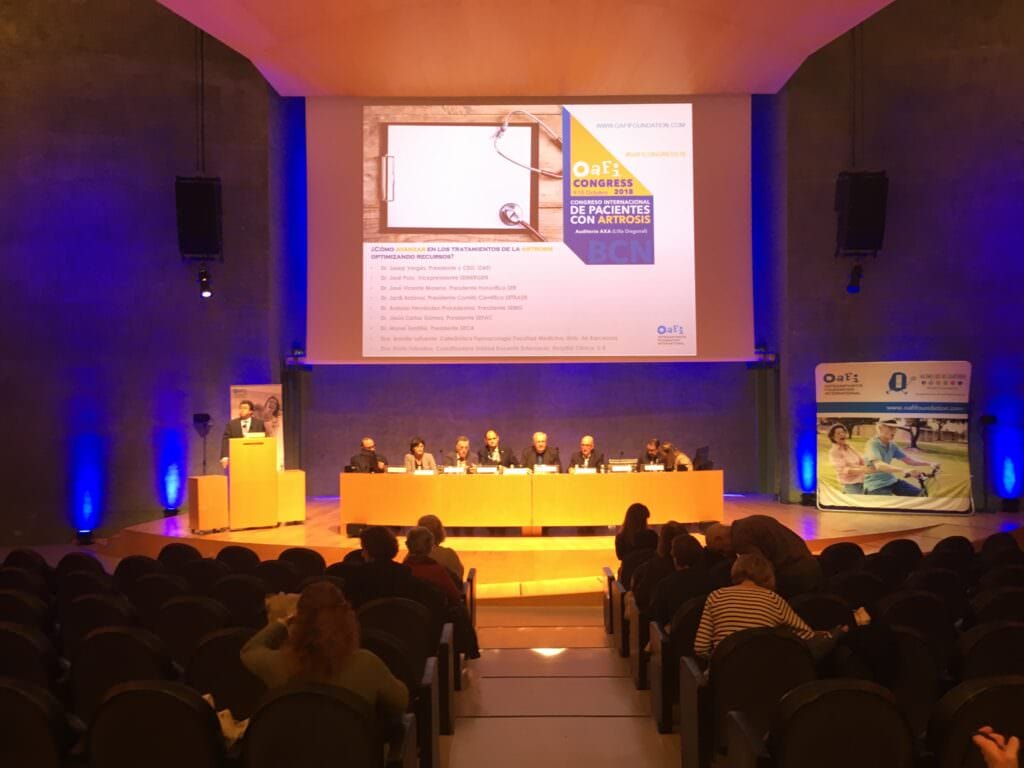
SUMMARY Statements Affiliated entities (in order of intervention):
- Dr Josep Vergés, President of the OAFI Foundation: “The reality is that the perception of the quality of care for osteoarthritis is not satisfactory due to late diagnosis, inequity in the national health system, lack of therapeutic compliance and poor coordination at the care level, among others. We must improve the current model, as the number of patients has doubled in recent years. We must take the right approach through education, prevention and non-pharmacological measures. With this new model we have the support of all the member organizations to carry it out and implement it with the Ministry of Health and the different autonomous communities, but what makes it really relevant is that the patients are the ones who lead this new model and fight to improve our quality of life.”
- Amalia Lafuente, Professor of Pharmacology, Faculty of Medicine and Health Sciences, University of Barcelona: “I adhere to Artro360, on a personal basis, but also absolutely in its three levels of performance. It is very important to train health care staff and patients in the possible interaction of the medication as patients with osteoarthritis are often polymedicated”
- Jose Polo, Vice President SEMERGEN: “As primary care doctors, we consider osteoarthritis to be a serious health problem, in which we find a multi-pathological and multi-medicated patient who is extremely fragile. We must fight for equity in the public health system, raise awareness among health professionals and patients to prevent and delay the onset of osteoarthritis as much as possible by changing lifestyles.
- José Vicente Moreno, President of the SER: “Osteoarthritis is the most common disease in the rheumatology specialty. The ageing of the population, bad habits and inadequate sports practice mean that many people suffer from osteoarthritis, and many of them with a lot of pain and dependency. There is a perverse idea that osteoarthritis has no cure and that it is only for the elderly. We must break this dynamic and OAFI can be the unifying force behind a large network of patients who demand at all levels, educational, social and political, that we fight for new drugs and improve the quality of life of those patients.
- Jordi Ardèvol, President of the SETRADE Scientific Committee: “Physical activity has a directly related effect in preventing joint damage, as depending on how it is indicated, it can have positive or negative effects. Childhood, growth, elderly people, all have a range of physical activity according to their locomotor system. We are fully involved in this new model of osteoarthritis management.”
- Antonio Fernández-Pro Ledesma, President of SEMG: ” As doctors who assist patients with osteoarthritis, we are experiencing the failure of the current care model . The patient with osteoarthritis is a special patient because he or she is not considered a serious patient, and the healthcare system is designed to solve acute problems. The SEMG has signed the agreement because this pathology has its own entity so that all those involved can work together to improve the treatment we are offering to patients.”
- Jesús Gómez, President of SEFAC: “We are joining ARTRO 360 because: dispensing; because we must be able to inform the patient of how, how much, why and until when, pharmacological indication, because of possible interactions, and follow-up, because we must add quality of life to the years. If we promote prevention, education and are at the patient’s side, we will achieve efficiency, health impact and economic savings.”
- Manel Santiñà, President of SECA: “We signed up because it is a model that seeks to improve the quality of care for people suffering from osteoarthritis, and with a fundamental fact, the involvement of the patient. There is a specific will for this model to be carried out, making better use of resources, because there will hardly be more resources.”
- Núria Fabrellas, Coordinator of the Nursing Teaching Unit, Campus Clínic, University of Barcelona: “Osteoarthritis is the most common disease and the one most frequently consulted in primary care. Nursing has an important role to play in health education, not only in the transmission of information but also in motivating and helping patients to change their lifestyles so that they know better what they should do, as their involvement is essential.”
- Salvador Tranche, President of semFYC: “Diseases of the locomotor system and connective tissue make up around 10% of the total number of consultations attended by primary care doctors. Of these, almost half are due to osteoarthritis, and it is estimated that one out of seven medical consultations are because of this disease. Although a cure is not within our scientific reach at the moment, pain relief and improvement of the functional capacity of sufferers is, for which an integration of care is needed, mainly through patient education, self-care and shared care and monitoring of their evolution.”
Categories :
